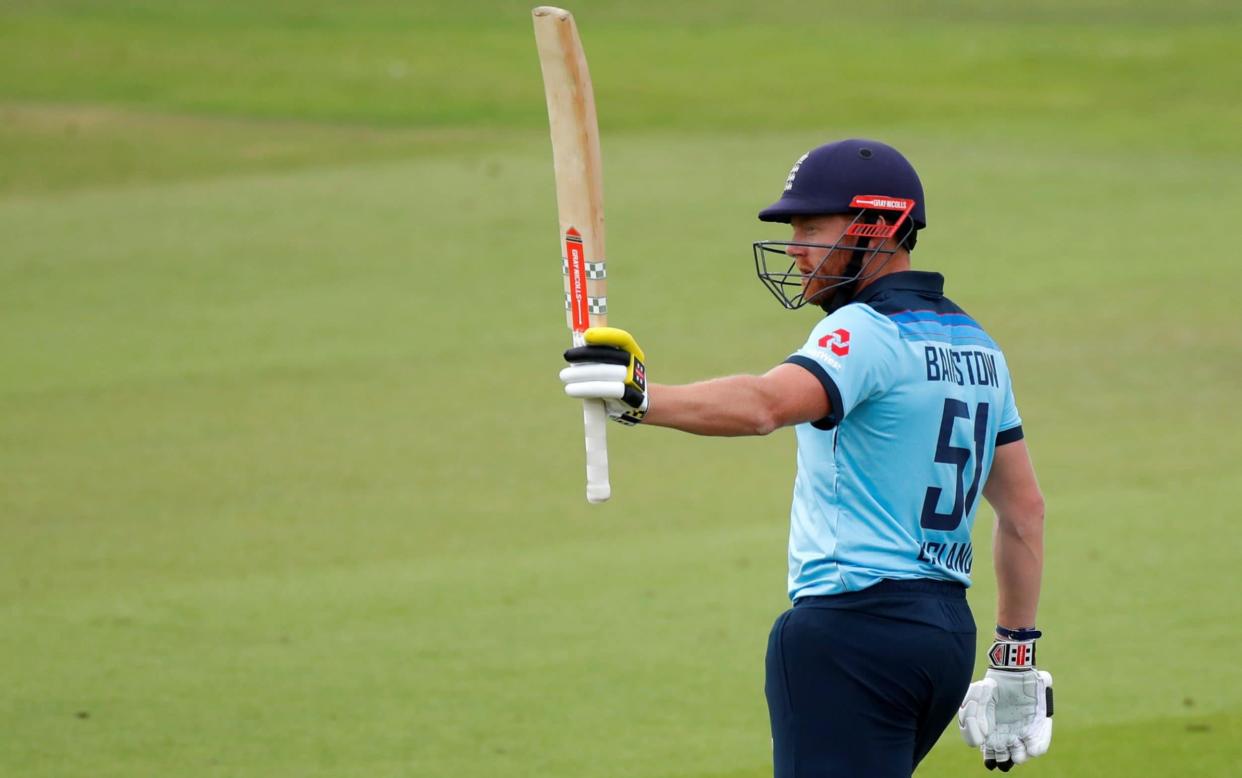Why Jonny Bairstow is one of the best ODI batsmen in the world

We need to talk about Jonny. It has often felt this way in English cricket in recent years, where it has been hard to escape discussions about Bairstow in the Test team. Should he keep? Where should be bat? Should he play at all?
Somewhere along the way, the story of Bairstow's development into one of England’s greatest white-ball cricketers of all time has been lost.
In the history of one-day international cricket, 70 players have scored 2000 runs opening the batting. Bairstow has the second best average of this group - and the best strike rate of the lot. He is an ODI marvel, marrying the consistency needed to average 50.2 with a strike rate of 111 - a ruthless exploiter of the fielding restrictions and reliable run-scorer all wrapped up in one.

Traditionally, opening in ODIs is about making a choice. Some players, like Geoff Marsh, Alastair Cook and Gary Kirsten, provided solidity. Others, like Brendon McCullum, Shahid Afridi and Sanath Jayasuriya, prioritised exploiting the fielding restrictions. Even the phenomenons Virender Sehwag and Adam Gilchrist averaged only 36 opening, showing how their belligerence was accompanied by relative inconsistency.

Comparing players between eras in ODIs is harder than in any other format; rules and average scores have constantly evolved. Yet, while he has played far less than them, Bairstow’s career is shaping up to group him among the very elite openers - Saeed Anwar, David Warner, Rohit Sharma and even Sachin Tendulkar - who both scored more quickly and more reliably than their contemporaries.
Absurd as it is to think now, in England’s rebuild after the 2015 World Cup, Bairstow was initially marked out for a role as middle-order spare part. When there was a temporary vacancy as opener at the start of 2017, England entrusted the role to Sam Billings instead of Bairstow. And when Jos Buttler missed ODIs to play in the Indian Premier League, Billings was handed the gloves.
Bairstow was piqued. He channelled his frustration into scoring abundantly; he moved up to open with Yorkshire, sensing it might be his best route into England's side. Yet when he was thrust into opening in the Champions Trophy semi-final in 2017, after Jason Roy’s form collapsed, it seemed a temporary solution; Bairstow had only opened seven times in county one-day cricket.
The accidental opener has become one of the finest ODI batsmen in the world; the crunching straight drives and disdainful swats of anything short of a length in Bairstow's 82 against Ireland on Saturday were merely the latest reminder of as much. Ireland, at least, can console themselves in the knowledge that Bairstow does not reserve such contempt for them alone.
Bairstow is becoming - perhaps already is - the consummate modern ODI opener, combining old-age consistency with the pyrotechnics that the age of T20 demands. While Roy can begin even more destructively, Bairstow has found a way to begin quickly - with a strike rate of 90 in his first ten balls - with minimal risk. He is adept thumping both pace and spin; indeed, his average and strike rate against spin are even better than against pace.
When leg spinner Yuzvendra Chahal was bowling early on in England’s critical World Cup game against India last year, Bairstow had the audacity to hit two sixes over long on’s head in three balls. He combines this power hitting down the ground with a ferocious slog sweep, and multiple variants of the reverse sweep, which he showed off against Kuldeep Yadav.
Bairstow followed pulverising India's spinners with doing the same to New Zealand's quicks. In England's two must-win group games, he had struck consecutive centuries at over a-run-a-ball. This was in keeping with Bairstow's ODI career: remarkably, all nine of his centuries have come at a strike rate of over 100.
Even before being England’s second top scorer in the World Cup, Bairstow entered rarefied territory in a dazzling maiden IPL campaign. His 445 runs, in ten games were the second highest tally that any Englishman has ever managed in the IPL. When Bairstow arrives at the crease in one-day cricket, he is now accompanied by an aura.

How Bairstow has got here is a testament to his extraordinary skill and drive. But it also reflects how, a few years ago Bairstow moved his technique to be more leg side of the ball; as CricViz’s Freddie Wilde has shown, this simultaneously compromised his Test defence while empowering him to hit through the off side in white-ball cricket.
There is still a strand in English cricket that thinks this trade-off not worth it. But this tweak helped to win England their first ever World Cup and make Bairstow one of the best white-ball batsmen in the world.
In a sense Bairstow is caught between worlds: between the traditional demands of English cricket - for players to master Test cricket, which he remains committed to - and between the opportunities that cricket now presents. Bairstow may or may not play Tests again. In some ways, it does not matter: his legacy as one of England’s greatest ever white-ball batsmen is already assured.

 Yahoo News
Yahoo News 
